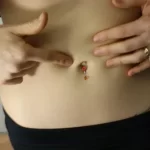In the fast-paced and high-stakes world of healthcare, maintaining a sterile environment is crucial to ensuring patient safety and preventing the spread of infections. One often underestimated yet critical aspect of achieving sterility is the proper utilization of scrub caps. In this article, we will delve into the science behind scrub caps and explore how they contribute to a sterile environment.
Contamination refers to the presence of harmful substances or microorganisms in a healthcare setting that have the potential to compromise patient health. These contaminants can vary in nature, ranging from bacteria and viruses to dust particles and chemical pollutants. The risks associated with contamination in medical facilities are vast, including the spread of infectious diseases, increased surgical site infection rates, and compromised patient outcomes.
Scrub caps play a pivotal role in reducing the transmission of contaminants. By securely covering the hair and scalp, they act as a physical barrier that prevents the shedding of hair, skin flakes, and other potential sources of contamination. Furthermore, the choice of material for Scrub caps is essential, as certain materials are more conducive to microbial growth than others. Selecting fabrics that inhibit bacterial colonization can significantly contribute to maintaining sterility.
Table of Contents
Design Features of an Effective Scrub Cap
An effective scrub cap should provide adequate coverage and fit securely to ensure maximum protection. It should cover the entire scalp and hair, leaving no room for exposure. Additionally, sweat absorption is crucial in preventing the accumulation of moisture that can contribute to bacterial growth and odors. Selecting scrub caps with moisture-wicking properties can help control the proliferation of bacteria.
Closures play a significant role in maintaining a secure fit. Some scrub caps utilize velcro, elastic, or tie-back closures, each offering different levels of adjustability and comfort. It is essential to choose a closure method that can be easily adjusted and does not compromise the overall fit.
Furthermore, comfort and breathability are of utmost importance, especially for healthcare professionals who often wear scrub caps for extended periods. Scrub caps that allow for adequate airflow and are made from breathable materials can enhance wearer comfort and reduce the risk of skin irritation.
ROLE OF A SCRUB CAP IN PROMOTING STERILE ENVIRONMENT
The primary mechanism by which scrub caps contribute to contamination prevention is through their barrier function. By physically covering the hair and scalp, they act as a shield against potential contaminants. Additionally, preventing hair and skin shedding is crucial, as these can harbor bacteria and other pathogens. Scrub caps effectively trap any shed particles, preventing their dispersion into the environment.
Furthermore, scrub caps aid in reducing microbial dispersal. When healthcare professionals perform procedures or surgeries, scrub caps prevent bacteria and other microorganisms from being dispersed into the air, minimizing the risk of airborne transmission. They also help contain aerosolized particles, such as droplets from coughs or sneezes, further reducing the chances of contamination.
Ensuring the sterility of scrub caps is vital. Various testing procedures exist to evaluate microbial growth on these caps. These tests involve swabbing the cap’s surface and incubating the swabs to observe bacterial colonies. Industry standards and certifications help healthcare professionals identify scrub caps that have undergone rigorous testing and meet specific quality criteria. Comparative studies on different scrub cap types provide valuable insights into their effectiveness in maintaining sterility and minimizing microbial contamination.
Surgical environments demand the highest level of sterility to ensure successful procedures and prevent infections. Surgical associations have set forth specific requirements and guidelines for the proper use of scrub caps in these settings. Scrub caps play a crucial role in preventing surgical site infections by minimizing the shedding of hair, skin flakes, and other sources of contamination during surgical procedures.
Moreover, there is a growing body of evidence pointing to a potential association between scrub cap design and procedural outcomes. The design features, material choices, and overall effectiveness of scrub caps can impact the success of surgical procedures and patient outcomes. Further research in this area can help optimize the design and usage of scrub caps in surgical environments.
Innovations in Scrub Cap Technology
Advancements in technology have paved the way for innovative solutions in scrub cap designs. The use of nanotechnology offers enhanced infection control by incorporating nanoparticles with antibacterial properties into the fabric. Antimicrobial coatings are another innovation that can effectively inhibit the growth of bacteria on scrub caps, reducing the risk of contamination. Additionally, the integration of smart fabrics, capable of detecting and signaling real-time contamination, holds great potential in further improving sterility in medical environments.
Conclusion: The Role of Scrub Caps in Sterile Environments
Proper usage of scrub caps is of utmost importance in preventing contamination and maintaining sterility in healthcare settings. From effectively reducing the transmission of contaminants to aiding in the prevention of surgical site infections, scrub caps play a vital role in protecting patient health. Healthcare professionals and facilities must prioritize the selection and use of appropriate scrub caps that adhere to industry standards and certifications. Together, we can create a sterile environment that prioritizes patient safety and optimal outcomes.








